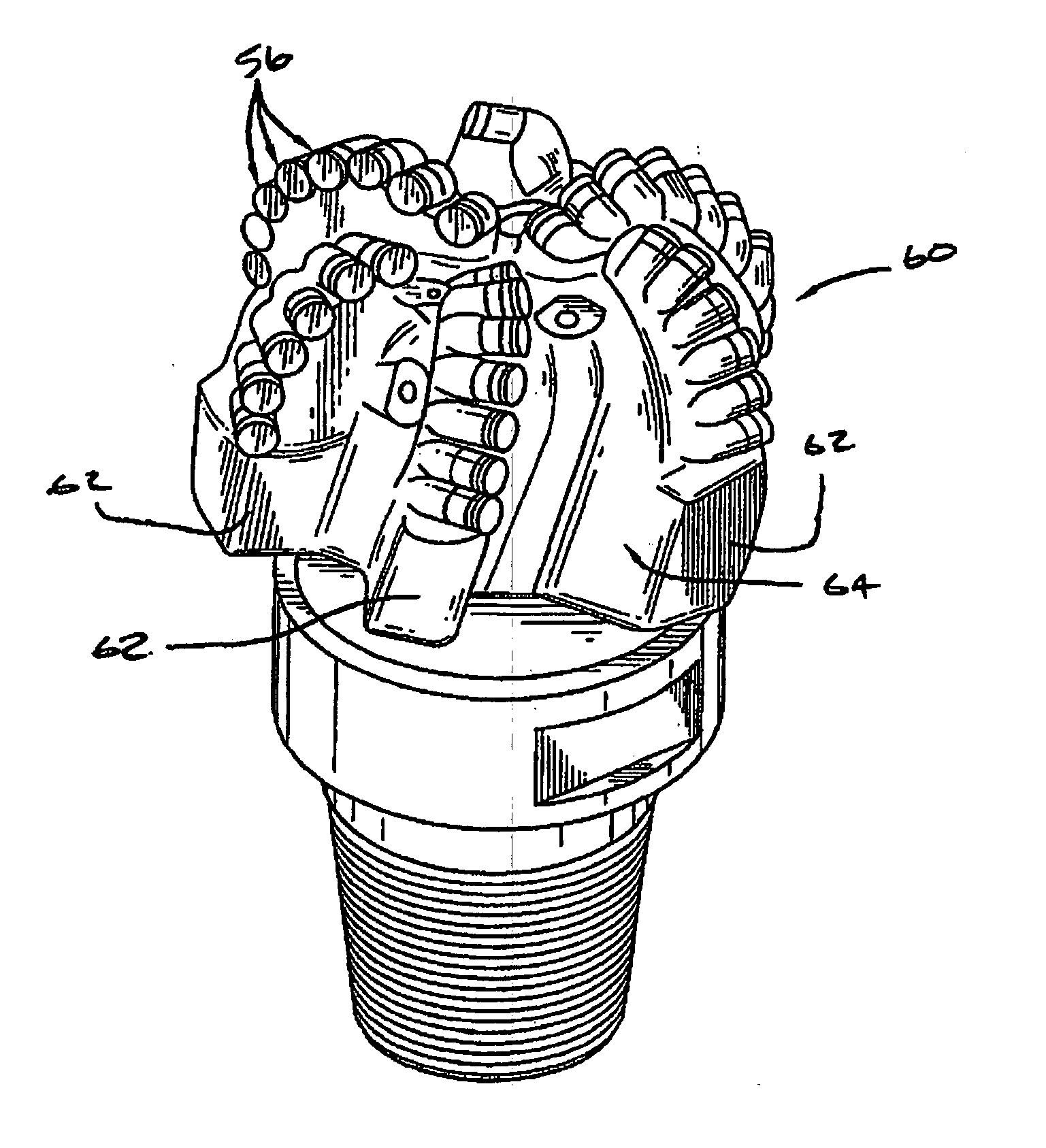Polycrystalline diamond composites
a technology of polycrystalline diamonds and composites, applied in the field of polycrystalline diamond composites, can solve the problems of reducing the penetration rate or speed of the drill bit through such hard formations, reducing the ability and effectiveness of the cutting element to remove the formation, and reducing so as to facilitate the attachment of the resulting construction and improve the degree of thermal stability and/or wear/abrasion resistan
- Summary
- Abstract
- Description
- Claims
- Application Information
AI Technical Summary
Benefits of technology
Problems solved by technology
Method used
Image
Examples
Embodiment Construction
[0032] In one aspect, embodiments of the invention relate to PCD composite constructions having a plurality of discrete regions dispersed in a polycrystalline diamond region, where the discrete regions have properties of thermal stability, polycrystalline density, binder or catalyst material type and / or content, wear resistance, and / or abrasion resistance that differ from that of a polycrystalline diamond material surrounding the plurality of discrete regions. Moreover, embodiments of this invention relate to cutting and / or wear elements including such PCD composite constructions and methods of forming the same.
[0033]FIG. 1 illustrates a PCD composite construction, prepared according to principles of this invention, that is provided in the form of a compact 10, e.g., one that can be configured for use as a cutting and / or a wear element for an end use application. The PCD composite compact 10 includes a polycrystalline diamond body 12 that is disposed on a substrate 14. The polycrys...
PUM
| Property | Measurement | Unit |
|---|---|---|
| Temperature | aaaaa | aaaaa |
| Temperature | aaaaa | aaaaa |
| Temperature | aaaaa | aaaaa |
Abstract
Description
Claims
Application Information
 Login to View More
Login to View More - R&D
- Intellectual Property
- Life Sciences
- Materials
- Tech Scout
- Unparalleled Data Quality
- Higher Quality Content
- 60% Fewer Hallucinations
Browse by: Latest US Patents, China's latest patents, Technical Efficacy Thesaurus, Application Domain, Technology Topic, Popular Technical Reports.
© 2025 PatSnap. All rights reserved.Legal|Privacy policy|Modern Slavery Act Transparency Statement|Sitemap|About US| Contact US: help@patsnap.com



